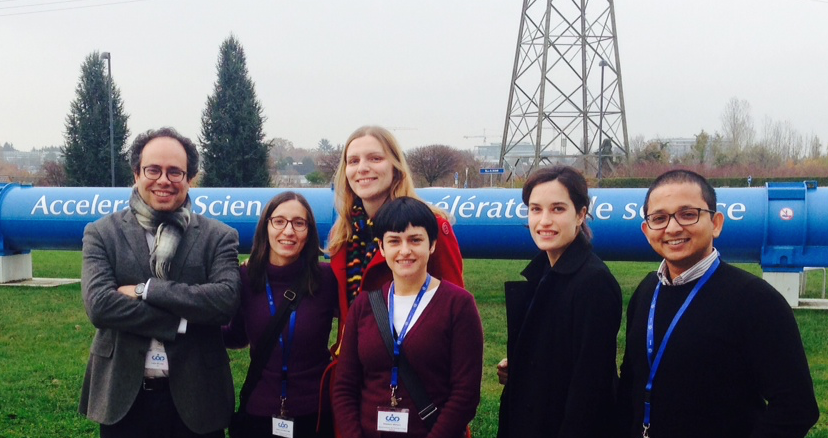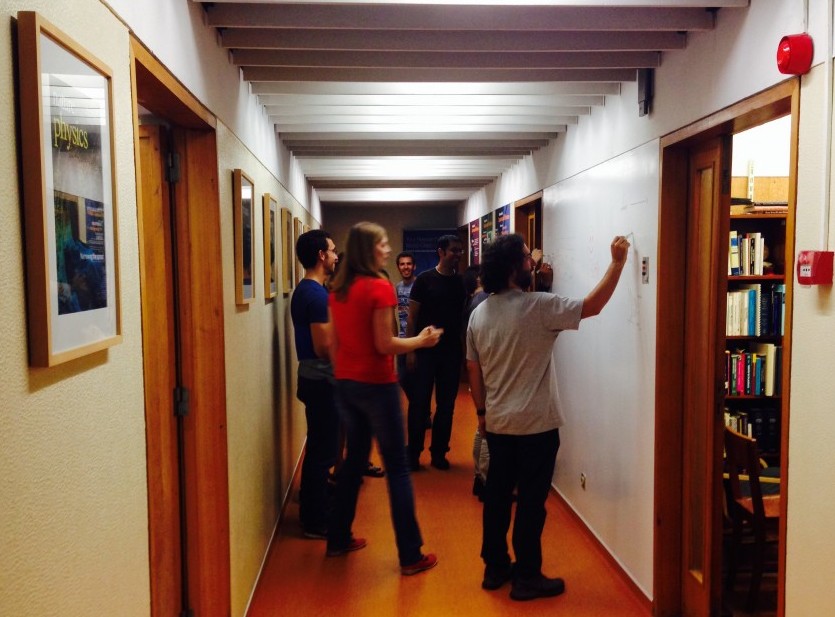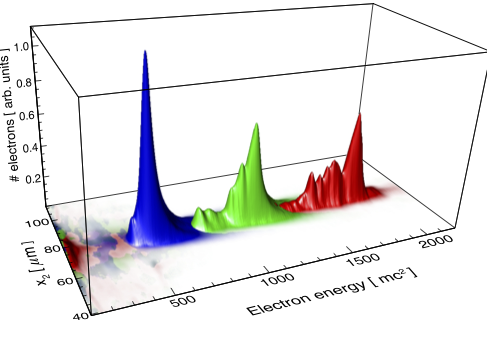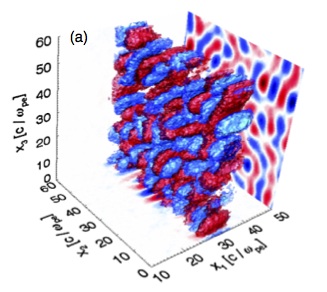-
New cluster featured in Intel Case Study
Read moreThe new cluster Accelerates has been featured in the Intel Case Study “University of Lisbon: High-Performance Plasma Physics”. The new HPC cluster features almost 2000 cpu cores and it will be used to support the research of the team in the framework of the ERC Advanced Grant Accelerates. The HPC Cluster Accelerates has already entered the final stages of testing and it will be in production very soon. The Intel Case Study is available here.
November 28, 2014 -
Team at CERN for Plasma Wake Acceleration School
Read moreLuis OS, Elisabetta, Joana, Marija, Diana, and Nitin attended the CERN Accelerator School on Plasma Wake Acceleration (23 – 29 Nov). For the first time, CERN hosted a school on Plasma Acceleration. The school has brought together the leaders of the field in Europe and more than 120 junior researchers for a week long of classes and case study sessions, exciting science, and many lively discussions at the CERN restaurant. More details on the school here.
November 27, 2014 -
The “Natas” of Visualization 2014
Read moreThe prizes for the winners of the image and video of 2014, the “natas” of visualization, were awarded today to Fabio Cruz (left) and to Paulo Alves (right), with the corresponding iPad Mini. Paulo and Fabio were joined by Thomas Grismayer (last year’s winner, center) and by the rest of GoLP to taste the “natas” of the “Natas”. As one of the 2014 winners (PA) described ““Nata” is a tasty Portuguese pastry that everybody likes. It’s as enjoyable as having our simulations running nicely on a big supercomputer. It can also mean being at the top, at a high level, important.”
November 21, 2014 -
epp team takes on New Orleans for APS DPP 2014
Read moreepp team members Ricardo Fonseca, Jorge Vieira, Thomas Grismayer, Kevin Schoeffler, Marija Vranic and Paulo Alves attended the Annual Meeting of the Division of Plasma Physics of the American Physical Society in New Orleans. Besides having fun and lively discussions with GoLP alumni and other friends and collaborators, there was also the opportunity to showcase our work in 6 talks and 4 posters.
November 5, 2014 -
epp team @ HELL DUR workshop of ELI Beamlines
Read moreLuis OS, Jorge V and Marija V attended the HELL DUR workshop of ELI Beamlines (invited contributions by Jorge and Marija). The workshop on HELL Experimental Platform – Detailed User Requirements Workshop was held close to the ELI Beamlines site (ELI building is in the back of the picture), near Prague in the Czech Republic.
October 28, 2014 -
The “Idea Walls” are up
Read moreTwo new Idea Walls have just opened at GoLP. Painted with IdeaPaint these walls are ready to take on the creativity and the ideas at the tip of GoLPers’ dry eraser markers.
.
October 10, 2014 -
All optical experimental tests for radiation reaction at moderate laser intensities in PRL
Read moreepp team researchers have proposed a configuration to test radiation reaction in the radiation dominated regime which takes advantage of state-of-the-art laser systems currently available. The configuration has been explored with massively parallel simulations that take into account the effect of radiation reaction in the particle dynamics via the Landau-Lifshitz equation. This work has been published in Physical Review Letters by Marija Vranic et al. and can be found here.
The portuguese version of the press release is below:Cientistas propõem teste experimental para a equação mais exótica da física clássica
Uma equipa de investigadores do IPFN/IST determinou as condições experimentais que poderão ser exploradas para testar uma das equações mais exóticas da física clássica, a equação de Lorentz-Abraham-Dirac (LAD). Esta equação descreve a dinâmica de uma partícula carregada, como por exemplo um electrão, que, ao ser acelerada, perde uma parte importante da sua energia por radiação emitindo luz e…
October 1, 2014 -
New EPP cluster arrives to Técnico
Read moreThe new EPP cluster has arrived to Técnico today. It has 80 nodes, each of them with 24 cores, making a total of 1920 cores, with an estimated peak performance of 43 Tflop/s. It was funded by the ERC Advanced Grant Accelerates and will be used by EPP in future research efforts. This computational resource will have a great impact on the work developed by EPP, providing the team with a critical tool to continue to be on the top of the research groups spread all over the world working in computational and theoretical plasma physics.
September 30, 2014 -
Electrostatic shocks generate magnetic fields
Read moreIn a paper recently published in Physical Review Letters, epp team researchers have demonstrated that in the downstream of electrostatic shocks the electron distribution function can be Weibel unstable and large amplitude magnetic fields are generated. These magnetic fields do not affect the shock dynamics but can modify the signatures usually considered for electrostatic shocks such as the radiation spectrum of the downstream particles. The paper can be found here
September 29, 2014 -
EPP researchers awarded 25 Million CPU hours in one of the fastest super-computers in the world
Read moreThe Partnership for Advanced Computing in Europe (PRACE) awarded 25 Million core-hours to a EPP researchers team lead by T. Grismayer to explore in the laboratory pair-dominated plasmas under the presence of ultra-intense fields and mimicking extreme astrophysical scenarios resorting to the unprecedented power of future laser facilities. This proposal aims to exploit the unique computing facilities provided by PRACE to address these exciting challenges by leveraging on the recently pioneered advances on ab initio simulations of quantum electrodynamics (QED) effects in extreme plasmas with particle-in-cell (PIC) simulations. Another key goal of this proposal is to investigate the radiation signatures in the Compton Regime, a regime that is not accessible with standard electromagnetic methods.
September 22, 2014
extreme plasma physics > News


















